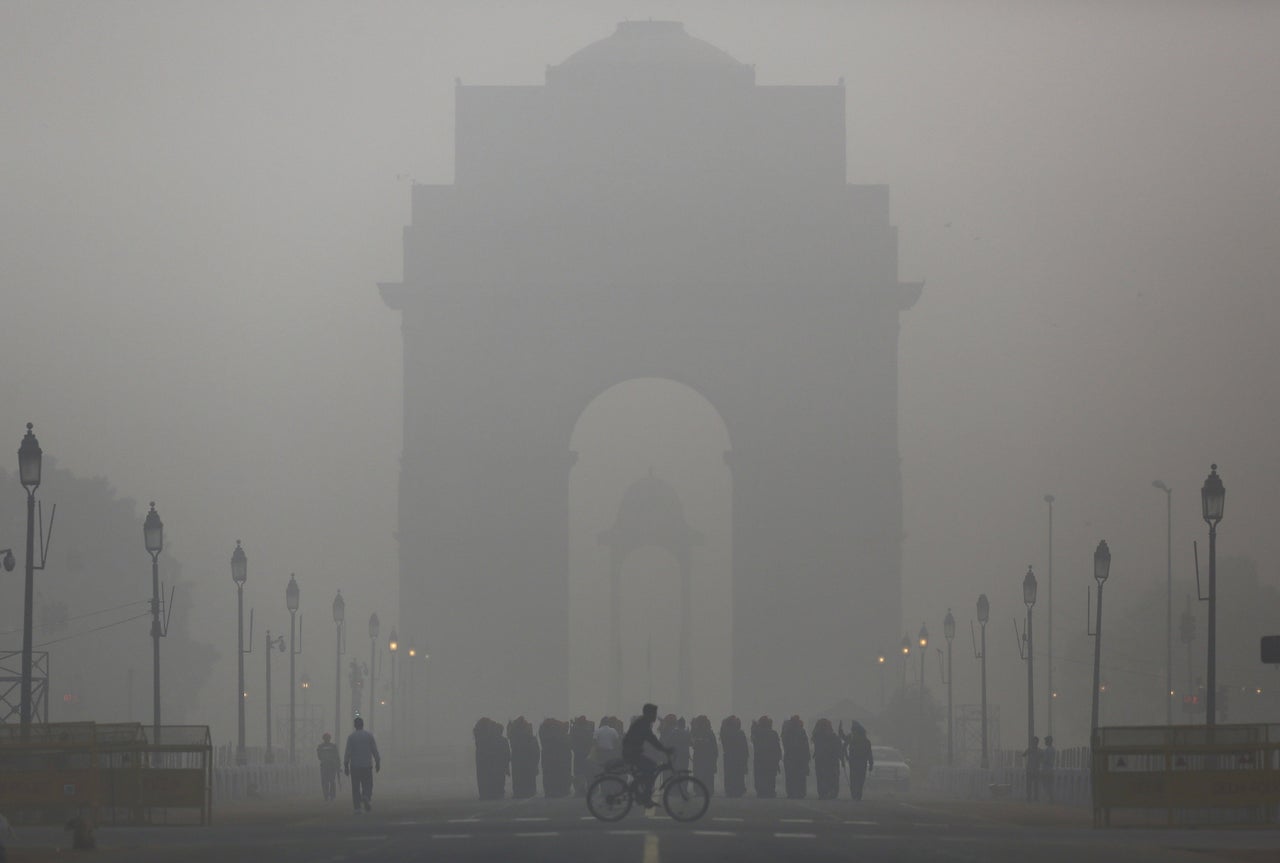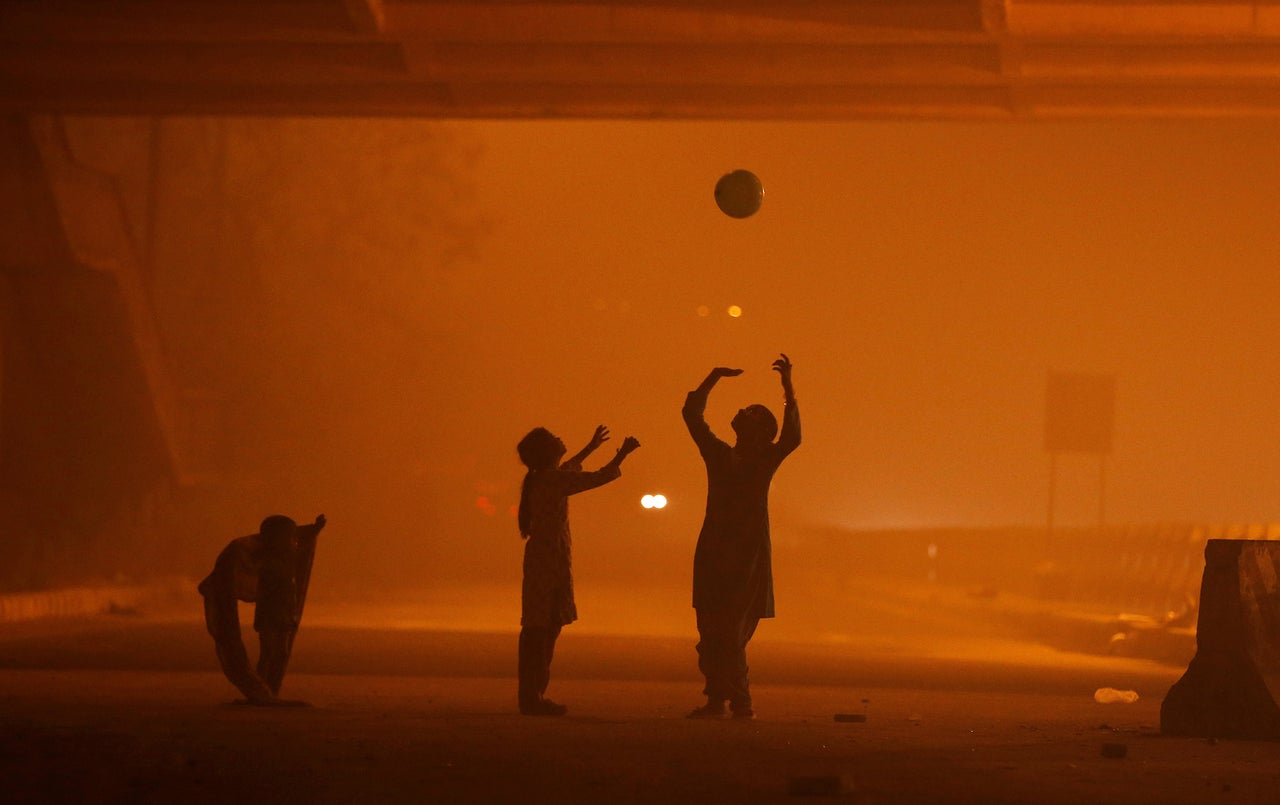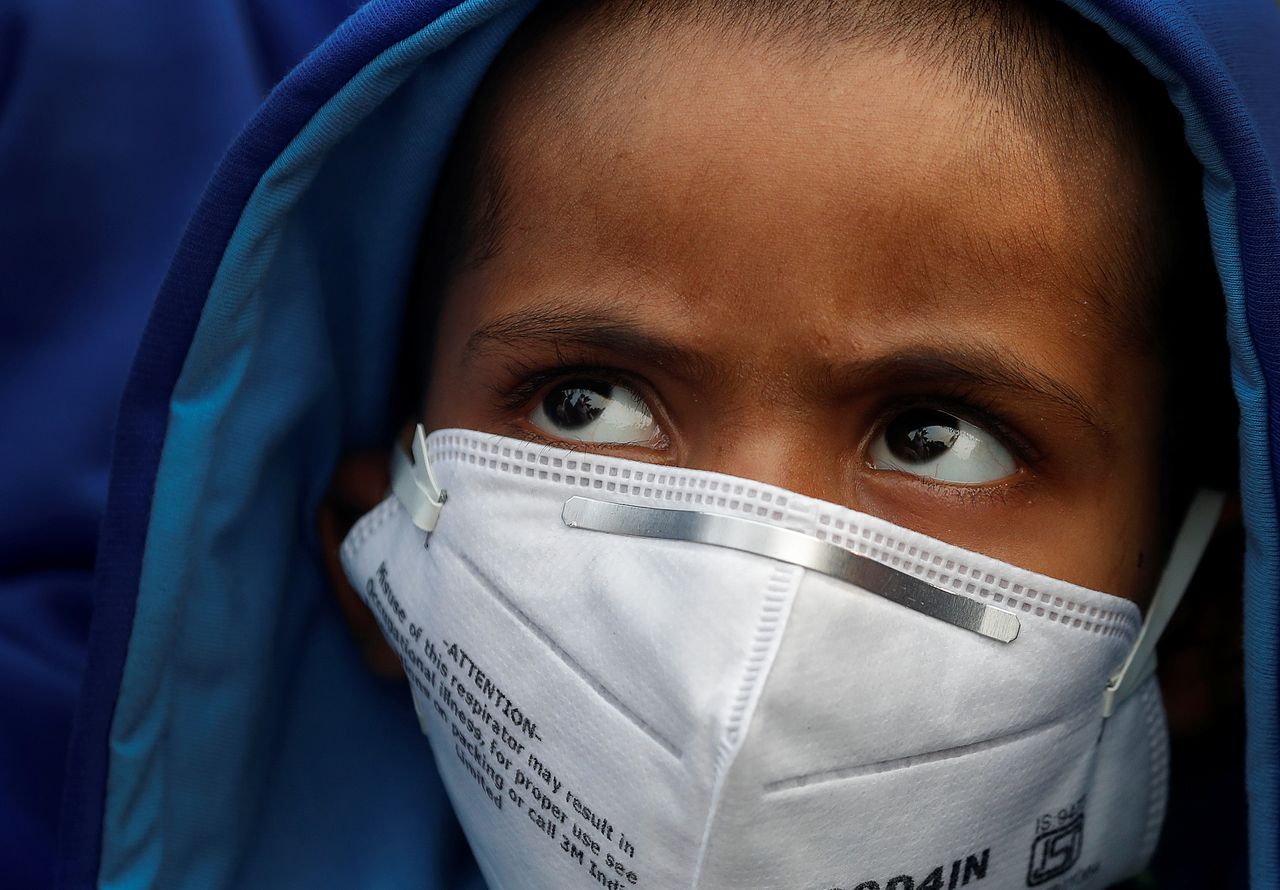NEW DELHI ― Farida used to live in Pul Mithai, one of New Delhi’s biggest slums. Every morning, she would go to the market and wait around the trucks to collect any spilled grains or discarded fruits and vegetables, which she would then clean and sell.
Last month, government officials evicted Farida along with her husband, two children and hundreds of others who lived in the slum. Land rights activists allege that the eviction was a part of Clean India, a program championed by Prime Minister Narendra Modi to spruce up his country’s image and promote cleanliness, in part by clearing out slums such as Pul Mithai.
Forced to live on the street, Farida and her family are now even more exposed to the city’s notorious air pollution, which this year reached record highs, forcing the government to shut down schools and airlines to cancel flights.
The air pollution has given Farida a permanent cough and makes her children’s eyes burn and water. But Farida, who asked that her last name not be used, has nowhere to go or any way to protect herself or her children against the fumes. She now lives under a busy elevated highway, where she has fashioned beds from bits of plastic and string among the debris of broken furniture, torn tarpaulin and broken bamboo. Trucks belch out thick clouds of smoke as they drive by on their way to the market, and the air is dank with the smell of urine and burning plastic.
“Sometimes the whole place smells of petrol,” she said. But “what choice do we have?”
Pollution recently reached record highs in Delhi, with some parts of India’s capital reporting levels in early November that were almost five times those considered “unhealthy” by the U.S. Environmental Protection Agency. The pollution sparked a political crisis and brought hundreds of people to protest outside parliament.
The government issued a health warning, suggesting that people stay home or carpool to work. But while more affluent Delhi residents could buy air purifiers, wear masks or stay indoors, the homeless had no such choice, and faced increased risk of respiratory problems, bronchitis and even possibly tuberculosis as a result of the pollution.
One in six deaths worldwide is caused by pollution, according to an October report in the Lancet medical journal. Diseases caused by pollution were responsible for an estimated 9 million premature deaths in 2015, according to the report, “three times more deaths than from AIDS, tuberculosis, and malaria combined and 15 times more than from all wars and other forms of violence.”
It added, “In the most severely affected countries, pollution-related disease is responsible for more than one death in four.”
The same study ranked India as the country with the most pollution-related deaths in the world that year. With 2.5 million people dying early because of pollution, India accounted for 28 percent of the world’s pollution-related deaths.
Indians from low-income groups, predictably, have taken the biggest hit. According to the report, 92 percent of pollution-related deaths in India in 2015 occurred in the middle and low-income groups of the country.
The country’s millions of poor and homeless are disproportionately affected by pollution: They are more likely to live near its sources, they have less access to good health care, and any air pollution-related health problems may be exacerbated by other issues they face, including malnutrition and lack of access to clean water.
The number of homeless people in Delhi, a city of 11 million people, is disputed and politicized. The Housing and Land Rights Network, an Indian NGO, estimates the population is between 150,000 and 200,000 people, though the figure could be much higher.
In addition to being exposed to factory emissions, burning fields and car exhaust, the homeless and those who live in the slums often light fires to cook or keep warm, sometimes burning plastic or rubber such as discarded tires, the fumes of which are highly toxic.
But the central and state governments have done little to protect the city’s homeless from pollution, several grassroots activists argue. For a few weeks in 2016 and 2017, the Delhi government floated a scheme to cut down on vehicular pollution in the city. During this period, cars with odd registration numbers and even registration numbers were allowed to drive on alternate days.
But despite the government’s claims of success, the scheme’s effect on the city’s levels of pollution was disputed and inconclusive, and the program was eventually shelved.
In November 2017, amid spiraling pollution, the Delhi state government attempted to sprinkle water from helicopters to absorb pollutants and dissipate the smog. But the smog cover was so dense that the helicopters couldn’t take off.
Commenting on the evictions at Pul Mithai, Ashok Pandey, member of an NGO that works on land rights, said, “Not only is the central government not doing anything for the homeless, now they are taking away the little they have built themselves. How are infants and old people supposed to survive in cold and pollution?”

One December evening last year, the stinging stench of burning rubber and tar hung heavy on the air around the popular Islamic Nizamuddin shrine in south Delhi. The broad sidewalks in the area were dotted with small groups of people, many huddled around small fires. “These are the unsavory choices they have. You either freeze in the cold, or you bury yourself in toxic smoke to stay alive,” said Armaan Alkazi, a researcher with Centre for Equity Studies, an NGO involved in research and advocacy for social justice.
Alkazi said the levels of pollution is directly connected to the number of people with tuberculosis. The Indian Medical Association has also said that air pollution, along with malnutrition and overcrowding, is responsible for the persistence of tuberculosis in India, and has raised concerns about the emergence of a drug-resistant strain of the disease.
At Nizamuddin, a small queue of women cradling wailing and wheezing babies had formed in front of the van. Imamat Hussain Naqvi, a doctor who has volunteered his medical services to help people like these for the past year, said that when Delhi was reeling under pollution, he estimated that the number of patients at these vans who complained of severe coughs almost doubled.
They “only come to us when it becomes unbearable. Unlike us, who are … constantly reading about pollution, they don’t know what’s going on and hence don’t take precautions,” he said.
A few feet away, Salima Devi is sitting with two other women and three children, gently poking a sizzling fire, from which thick plumes of smoke billow. Salima and her toddler inch closer to it.
“How else will we survive in this cold? We have to burn things, or else we will freeze to death,” Devi said, adding that she has been told smoke from burning wood isn’t unhealthy and won’t affect the child.
In reality, the smoke from burning wood contains a number of microscopic particles that can get into the respiratory system and cause serious health problems, such as bronchitis. Wood smoke also contains toxic pollutants such as benzene, formaldehyde, acrolein and polycyclic aromatic hydrocarbons.

Pradeep Bijalwan, a physician who has been practicing community medicine in Delhi for two decades, treating the poor and homeless for free, said that while the homeless are the most vulnerable to the pollution in the city, they also worry about it the least, since air pollution is eclipsed by more immediate concerns, like feeding their children. And unlike the rest of Delhi, they are unable to feel its effects in isolation.
“It’s a part and parcel of their lives. And unlike us, who can feel a burning eye or itchy skin, pollution colludes with issues like malnutrition, lack of access to clean water, and unhygienic living conditions to compound diseases like tuberculosis,” Bijalwan said.
He said that little has been done to alleviate air pollution problems for the poor. “The middle class is myopic,” he said. “They cannot see beyond their own discomfort.”
The government has encouraged homeless people to seek out room in government shelters, though NGO groups complain there are not enough.
For now, a group of homeless people keep coming back to live on the streets and under bridges, which provides them easy access to passersby giving away food and money, as well as charity groups distributing everything from food to blankets.
Mohammad Nazir, a 65-year-old waste-picker who collects and separates waste from garbage dumps and landfills, collects whatever scrap he can salvage and sells to wholesalers and recyclers for roughly 22 cents per pound. After being bounced between government hospitals, his wife was recently diagnosed with typhoid after suffering a fever for days. For someone who has to sift through garbage and sell at least 6.5 pounds of scrap to make a dollar a day, a private medical facility costs the equivalent of two meals and is a rare luxury.
Nazir, who doesn’t wear gloves or any other protection from the toxins mixed in the waste or the fumes emanating from fires in garbage dumps, contracted tuberculosis two years ago. He was told to take a course of medicine but couldn’t afford the prescription as he had to pay for his daughter’s wedding. “So I didn’t get cured.”
He said that about half a dozen waste-pickers he knew had contracted lung cancer over the years and one of his friends was diagnosed with a malignant brain tumor days before he spoke to HuffPost. Every waste-picker he knew, he said, was suffering from some kind of respiratory disorder and didn’t have the means to get treatment.
Many of his fellow waste-pickers are sick but it’s hard to tell what causes the ailments. Doctors say that, in addition to contracting difficult-to-cure skin infections when working in the garbage dumps, the waste-pickers’ health problems are exacerbated by the air pollution.
“Whenever we go to government hospitals with ailments ― say a cough ― in a majority of cases the doctor doesn’t even check us properly. They listen to us for a few seconds and then write us a medicine,” said Nazir. “A couple of days later we go back, complaining we haven’t been cured. For example, this one time I was coughing furiously in front of the doctor and he insisted I must have been cured already, since I had completed the course of medicines he had given me. How does one overcome that?”
